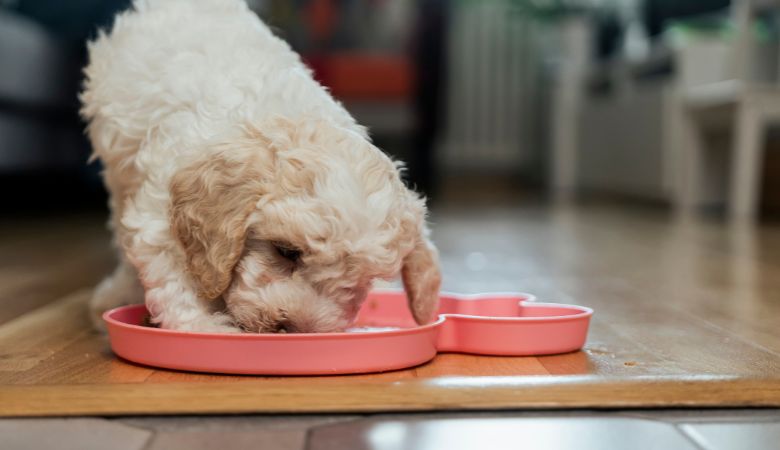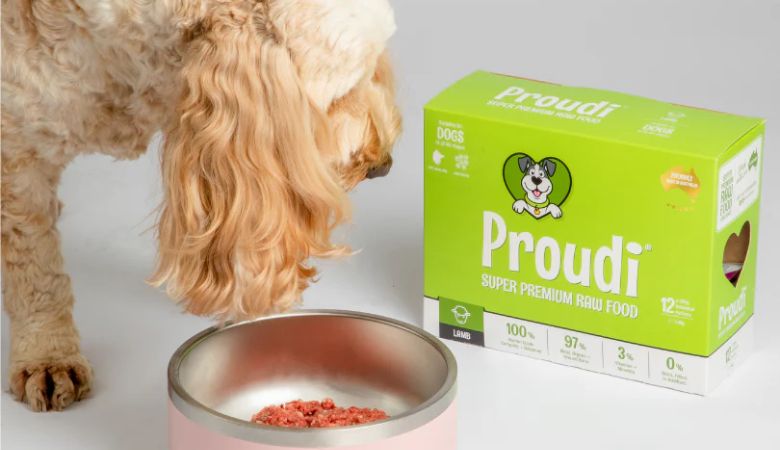Feeding your pet a raw diet offers numerous health benefits, but prioritising safety and hygiene is crucial to prevent potential health risks. In this article, we discuss key practices for safely handling and feeding fresh food to your pet.

Why Safe Raw Feeding for Pets is Crucial
Handling raw meat, bones, and organs can introduce bacteria and parasites harmful to both pets and humans. That’s why when practicing safe raw feeding for pets, it is important to follow proper safety and hygiene protocols to minimise contamination risks and ensure that your pet enjoys the benefits of a raw diet without adverse effects.
-
How to Source Safe, High-Quality Raw Ingredients for Your Pet in Australia
- Choose Reputable Suppliers: Source raw food from reputable suppliers who maintain high standards of hygiene, quality, and safe handling procedures.
- Inspect Ingredients: Ensure that raw ingredients are fresh and free from spoilage signs, such as discolouration or off smells.
-
Proper Handling and Storage of Raw Pet Food
- Refrigeration and Freezing: Store raw meat, bones, and organs in the refrigerator if using them within a few days. For longer storage, freeze ingredients to prevent bacterial growth.
- Separate Raw and Cooked Foods: Avoid cross-contamination by using separate cutting boards, utensils, and containers for raw food preparation.
-
Safe Raw Pet Food Preparation
- Cleanliness: Wash your hands thoroughly with soap and water before and after handling raw food. Clean and sanitise all surfaces, utensils, and equipment used in raw meal preparation. Continually wash feeding utensils, such as bowls and enrichment feeders, after each use.
- Defrosting/Thawing: Thaw frozen raw food in the refrigerator in a sealed container. This method, though slower, keeps the food below temperatures associated with bacterial growth. If dividing into smaller portions, defrost in the refrigerator until separable, then portion and refreeze. Do not refreeze food that has reached room temperature.

-
How to Supervise and Portion Raw Meals for Pets
- Supervision: Always supervise your pets while they eat raw food, especially bones, to prevent choking and ensure proper chewing.
- Portion Control: Measure and portion your pet's meals according to their size, age, and activity level. Assess your pet's weight and condition rather than relying solely on feeding guidelines to prevent overfeeding or underfeeding.
- Freshness: Serve raw meals fresh and discard any uneaten food to prevent spoilage.
-
How to Clean Up After Feeding Raw Diets to Pets
- Dispose of Leftovers: Immediately dispose of any uneaten raw food and thoroughly clean your pet's feeding area to prevent bacterial growth and contamination.
- Sanitise Feeding Bowls: Wash feeding bowls, enrichment feeders, utensils, and any surfaces that came into contact with raw food with hot, soapy water after each meal.
-
Monitoring Your Pet’s Health on a Raw Diet in Australia
Ensure your pet stays happy, healthy, and enjoys a good quality of life through continuous monitoring:-
Physical Health:
Regularly assess your pet’s body condition score, dental health, mobility, and skin and coat condition. These indicators are crucial for overall health.
Monitor your pet’s mental state by being vigilant for changes in behaviour or activity levels. Understanding what is normal for your pet helps catch potential problems early, ensuring prompt and effective care.
-
Mental Health:
Monitor your pet’s mental state by being vigilant for changes in behaviour or activity levels. Understanding what is normal for your pet helps catch potential problems early, ensuring prompt and effective care.
- Regularly check your pet's stools for signs of parasites or digestive issues. Healthy stools indicate a well-managed raw diet.
-
Physical Health:
-
Educate Yourself on Safe Raw Feeding Practices for Pets
- Research: Stay informed about raw feeding practices, potential risks, and benefits. Join raw feeding communities and consult with veterinarians or companion animal nutritionists to ensure you are providing a safe and balanced diet.

Conclusion
Feeding your pet a raw diet offers significant health benefits, but safety and hygiene must be top priorities. By sourcing high-quality ingredients, practicing proper handling and storage, and following safe preparation and feeding guidelines, you can minimise contamination risks and keep your pet healthy and happy.
With the right practices in place, you can confidently provide your pet with the nutritional benefits of a raw diet while ensuring their safety and well-being.


